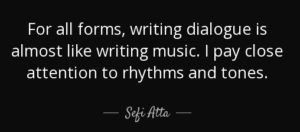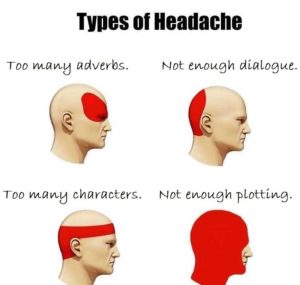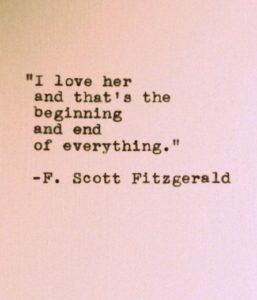How to write Dialogue? An Essential Guide for Writers
Good dialogue is an essential tool for any writer. It can be used to create tension, move the plot forward, and develop character. But writing effective dialogue can be tricky. To make your dialogue sound natural, you need to master the art of conversation.
In this article, we will discuss some effective tips for how to write dialogue.
- What is Dialogue?
- The Importance of Dialogue
- The Rules of Writing Dialogue
- Format of Writing Dialogue
- How to Write Effective Dialogue?
- Introducing characters through dialogue
- Dialogue as a means to reveal backstories
- Dialogue as a means to reveal key plot points
- Tips for Writing Good Dialogue
- Read your dialogue while writing
- Giving a unique voice to your characters with dialogue
- Add a flavor to your world-building
- Don’t forget that less is more
- Examples of Effective Dialogue from Published Works
- Common Mistakes Writers Make with Dialogue and how to overcome them
What is Dialogue?
Dialogue is an essential part of any book and it can truly bring the characters and story to life. Dialogue denotes what a character is saying or what they’re thinking, usually as a conversation between two or more characters.
While it’s easy to write what a character is saying, what separates great dialogue from the mediocre dialogue are the fundamentals. This is a key to understanding how to write dialogue.
If you want to write effective dialogue in your book, then knowing how to write dialogue is essential. You need to structure it so readers can immerse themselves in what’s happening in the story depending on the writing with character direction and authenticity, as well as logical transitions that accurately reflect natural speech patterns.
Internalizing who your characters are and creating realistic conversations between them will make your dialogue unique and compelling. Your readers will hold on to the dialogues at the end of their reading experience.
Additionally, using precise word choice to establish tone, pacing, emotion, context, and the setting adds powerful dimensions to your writing you didn’t think were possible.
When you get started on how to write dialogue in your writing, it is important to pay attention to three fundamentals: clarity, realism, and impact.
Clarity
Clarity is crucial to consider in how to write dialogue. The clarity creates understanding and trust between the two parties engaged in the conversation. It is a foremost aspect to pay attention to when you navigate how to write dialogue.
The more accurate the messaging is, the easier it will be to build a connection between both sides as what’s spoken carries understanding.
Moreover, clarity helps prevent misunderstandings or miscommunications from occurring by providing clear instructions and/or expectations for what comes next during the dialogue.
To sum up, clarity is fundamental for a productive dialogue since it provides structure and meaning that lays the foundation for successful conversations.
Realism
Dialogue in the book is integral for expressing thoughts, describing characters and circumstances, and taking forward a plot. For this reason, realism plays an important role to make the dialogue effective.
It helps to make the readers connect with what’s being said in your book through the realistic expressions of the characters.
By incorporating gestures, mannerisms, and nuances in your dialogue, the expression becomes alive and engaging allowing readers to identify with it.
Realism is fundamental in your dialogue. You need to understand how to write dialogue realistically because without it the conversation appears dull and lacks any depth of emotion which may render it ineffective in conveying what it meant.
Impact
Dialogue involves exploring an issue and understanding different perspectives. The impact is the necessary element to ensure the conversation is effective.
When the impact that you want is lacking, there is a tendency for the conversation to move around rather than get to the point, which can leave both participants feeling frustrated and inhibited.
Impact increases clarity of what each person is saying and allows for meaningful discussions that provide depth and direction to what is being discussed.
To create a lasting understanding that you want and affect mind-shifting changes in behavior, a powerful impact must be established within each dialogue because it can reinforce what has been said while providing further incentive for change.
Without impact, conversations are often characterized as surface-level debates with no real momentum toward a resolution.
The Importance of Dialogue
Dialogue forms an integral part of any book and is what differentiates it from other forms of written works. Put simply, dialogue denotes the conversation between characters usually presented in the form of quotation marks. You need to understand the basics and importance of the concept to proceed with how to write dialogue.
If you have to navigate how to write dialogue, you need to understand that the purpose involves providing insight into what the character is thinking or feeling and what their relationships with one another are like.
“Dialogue allows readers to connect with the characters by learning more about them and what motivates their actions. “

Furthermore, dialogue provides a dynamic quality to the story not found in other forms of writing; something that keeps readers interested as they can follow what characters are saying and how they respond to one another intuitively without being taken out of context.
Ultimately, understanding what dialogue provides and what its importance is in moving a story forward can lead to a greater appreciation for how authors use it effectively and creatively to craft stories we love.
The Rules of Writing Dialogue
Crafting an engaging dialogue can be tricky. Good dialogue gives life to the conversation, making scenes realistic and involving.
But how should one go about writing a dynamic dialogue that captures the essence of a scene? There are a few key rules to follow when you get started on how to write dialogue.
If you have to start on how to write dialogue, you should make sure the grammar and spelling in your writing are correct; this will help stream reading and create solid characterization that you want to achieve through the dialogue.
You can allow pauses between characters’ lines as this creates real-world dynamics found in natural conversations.
As one of the general rules, whenever you start a new paragraph of dialogue, you need to be starting with a new sentence that contains the speaker’s name or designation (e.g. Jane said). Additionally, if the same character is speaking for two or more sentences in a row, these also need to be placed into the same paragraph.
A dialogue tag consists of short pieces of information that give more insight into the character speaking or indicate what kind of tone your character is using to say something.
“Dialogue tags can give dialogue depth and context within the writing. The dialogue tag should sound natural inflow and fit with the dialogue it is accompanying.”
Additionally, you should use dialogue tag to provide action that reinforces character qualities to an audience. For example, a character might “shout” words of encouragement or tearfully “whisper” to another character at a time of strife.
Make sure to add a dialogue tag to each response of a character to let readers know who is speaking to whom and when they are speaking to provide clarity to your readers.
Format of Writing Dialogue
Writing dialogue in your story is as much an art form as it is a technical skill, and can be a great way of engaging readers with characters and plot.
To ensure the dialogue reads naturally and flows through the story, you should consider a few specific rules when formatting the text. Knowing the format is crucial to understand how to write dialogue.
Firstly, dialogue should be contained within the quotation marks – this denotes that something is being said by someone and the subsequent lines should have speech marks too but don’t require quotation marks at the beginning.
You can also use interesting dialogue tags along with your dialogue. The use of a quotation mark and dialogue tag is a fundamental rule and format for writing dialogues. You should always make sure to close the end of the dialogue with quotation marks.
Punctuation also plays an essential role in how writers convey their tone of voice. In other words, how to help readers understand how certain lines should be read – if they’re angry, sad or joyful, etc. Understanding the rules of punctuation will help you in navigating how to write dialogue.
Depending on how you want a line of dialogue to sound, you may use exclamation marks or pause with ellipses. Unlike regular prose writing which follows consecutive lines, dialogue should always be indented from the rest of the paragraph to signify there’s been a change in speaker or tone.
How to Write Effective Dialogue
Writing effective dialogue is an essential skill for any author. If you want to craft dialogue that captures the reader’s attention and leaves a lasting impact, writers need to create believable and engaging conversations that move the story forward.

The key to answering how to write dialogue involves understanding how people interact with each other, mastering how to provide pleasing pacing and good transitions between turns of conversation, and employing visual cues, such as body language, facial expressions, and pauses in speech.
Additionally, if you have to start on how to write dialogue it is important to ensure that dialogue flows naturally by avoiding long blocks of text or excessive use of adverbs. Pay heed when you are writing the dialogue tags and ensure they are interesting.
Furthermore, if you use varied sentence structures when writing dialogue, it will ensure that your storytelling feels natural—in much the same way that spoken language does.
Ultimately, taking time to practice how you write dialogue will result in more dynamic and dramatic storytelling which can add an extra dimension of depth to any book.

Watch this for more insights on how to write great dialogue:
https://youtu.be/hEgsIV98ZmU
Furthermore, using varied sentence structures when writing dialogue will ensure that your storytelling feels natural—in much the same way that spoken language does.
Ultimately, taking time to practice how to write dialogue will result in more dynamic and dramatic storytelling which can add an extra dimension of depth to any book.
Introducing characters through dialogue
Writing engaging dialogue becomes a powerful tool that writers use to introduce a character in a story. Dialogue helps the readers to gain an understanding of how the characters think and how they interact with each other, which allows them to form a connection with the character and become invested in the story.

Writers use this knowledge to craft dialogue that resonates with readers, such as writing conversations in a common language, utilizing cultural references, or simply sticking to how people talk.
When done well, you can use dialogue and a dialogue tag as powerful tools for emphasizing how the new character acts, how they react to other characters, and how their personality fits into the story’s setting. Hence, broader knowledge is essential as you find your way through how to write dialogue.
It is an effective way for the author to subtly introduce new perspectives, spice up suspenseful moments, and enrich any reader’s experience by giving them deeper insight into how each character behaves within the story.
Dialogue as a means to reveal backstories
Writing dialogue can be an effective way to reveal backstories without relying on long-winded expository paragraphs. Good dialogue adds characterization, creates pacing and tension, and encourages reader engagement with the plot.
You can find dialogue useful for revealing backstories, writers should make sure each exchange between characters has a purpose.
Every line of dialogue should push the story forward or show how characters relate to each other – the backstories revealed in the conversation should contribute to the overall plot.

When writing backstories through dialogue, it’s important to use indirect language that will evoke more than just backstory details.
Make every line count and bring out the personalities of the characters by giving them individual speaking styles that readers can recognize. This will help you create conversations that are insightful, effective, and engaging!
Dialogue as a means to reveal key plot points
One of the best ways to understand how to write dialogue involves understanding its numerous valuable uses. It can be used when crafting stories to reveal key plot points.
This technique can help authors quickly usher their stories into exciting twists and turns, revealing the characters’ deepest secrets and motivations.
To make sure readers don’t miss out on essential information, writers should seek to write dialogue with a sense of urgency or intensity that draws in the audience and allows them to connect the dots faster.
Using singular phrases or sentences holds more impact than regular narration for revealing important plot points as well.
Moreover, carefully orchestrated conversations that have one character introducing an idea only for another to break it down with color commentary are also helpful tools in a piece of dialogue.
Tips for writing dialogue
Writing captivating dialogue in your novel can be a challenge, creating believable conversations between characters is essential for any story. To learn how to write good dialogue and make every conversation impactful, start by understanding how each of your characters would talk.
Think about how their speech patterns differ and include distinct idiosyncrasies that distinguish each character’s voice. If you want to make sure each line of dialogue reaches the reader, consider how the same would sound in real life and how they create an emotional connection with the audience.

You can also use action beats to provide readers with more context or add to the tension in a scene without over-explaining what is happening.
Finally, keep in mind that while communication between characters carries weight, try to avoid using too much exposition as this can take away from the natural flow. By using these helpful tips as guidelines, you will soon be able to write believable and realistic conversations for your characters!
Reading your dialogue while writing
Writing dialogue is an art, with its own set of rules and techniques. Learning how to write dialogue effectively can often be a challenge, but one consistently effective technique is reading your dialogue out loud before you publish it.
Hearing how your dialogue sounds can help you identify any parts that are unnatural or awkward and make changes to ensure your readers will find it engaging.
Reading dialogue aloud also helps you shape the tone and pacing of your characters’ conversation realistically, enabling readers to feel like they are in the scene themselves.

While reading your work out loud isn’t the only way to produce compelling dialogue for your story, it’s a useful tool for improving how your dialogues reach audiences and how enjoyable they can be when experienced firsthand.
Giving a unique voice to your characters with dialogue
Writing effective dialogue that serves its unique purpose of giving a voice to your characters and conveying more nuanced details about them is an art form.
Knowing how to craft how each character speaks, be it their syntax, word choice, vernacular, tone or dialect can also reveal underlying messages both to the reader and between characters.
Guidelines on how to write succinct but interesting dialogue include actively avoiding expository dialogue where characters slather information onto the reader, opting instead for grounded conversations that naturally reveal backstories or key plot points.
You can take your time to think through how your characters would communicate will be a worthwhile reward in terms of immersing readers in your story.
Add a flavor to your world-building
Writing dialogue for any kind of story is an important skill, but it is especially important when attempting to create a rich world-building.
An effective way to do this is by drawing from the culture and environment that surround your characters and how they interact with them.

For example, if your world-building includes a large city with different parts of town, the way people talk will greatly depend on where they are from and how they grew up.
By contrasting how a person speaks in different situations, you help give life to the atmosphere of your story’s setting.
Additionally, you can unique slang or local phrases as tools, adding an extra layer of authenticity to how people interact and how others perceive them – this strategy helps build up believable and living worlds without having too many words on the page.
The way you write dialogue has the power to enhance your world-building while giving it a unique flavor that stays with readers long after they finish reading.
Don’t forget that less is more
You can view dialogue writing as an art form, and the only way to develop it is with practice. One of the most important principles to remember is “less is more”.
You can focus on producing concise and impactful lines that capture the intent of the conversation but don’t bog down the story with excessive or unnecessary information. The goal should be to lay out how two people are speaking without going into too much detail.
Doing so will ensure your reader understands what they’re discussing while also not becoming overwhelmed or bored by how long-winded or how contrived their words sound.

To succeed you need to choose your words carefully, provide an appropriate tone of voice for each character and keep the conversation flowing naturally. In short, less is more when it comes to writing good dialogue.
Examples of Effective Dialogue from Published Works
Writing effective dialogue in your work can make or break the success of the story, so it is important to know how to create conversations that are engaging yet plausible.
This can be intimidating for new writers but it doesn’t have to be. Experienced authors have provided us with plenty of examples that demonstrate how to write remarkable dialogue.
Popular examples of how to write dialogue include works such as F. Scott Fitzgerald’s “The Great Gatsby” Another example you can look at is J.R.R Tolkien’s “The Fellowship of The Ring” which offer a variety of natural exchanges between characters that help to advance the plot and develop characterization effectively and entertainingly.
From Thomas Becket’s famous line, “Not dead? What then?” in T.S Eliot’s “Murder in the Cathedral” to Dorothy Parker’s witty exchange in “A Telephone Call”, both written pieces serve as fine examples of how compelling dialogue can be crafted with nuance, humor, and surprising wit.
From Scott Fitzgerald’s The Great Gatsby
In The Great Gatsby, F. Scott Fitzgerald “showed how to write a dialogue as no one had ever done before” (Brazeau). This is evidenced by how effective the dialogues are and how the voice of the character comes through with clarity and depth for readers. The Great Gatsby is a renowned example of well-written dialogue in a novel.
“Rivers Browne, of The Guardian, notes “The exchanges between Daisy and Gatsby contain some of the best-written dialogue in literature”. He hails it as a supreme example of dialogue of how to write a piece of dialogue.”
These pieces offer insight into how crafting dialogue should be done. For example, when Gatsby and Daisy finally speak after their five-year absence many pages earlier in the novel, they succinctly call back to this history and all that has built up over time: “They came out on a rainy street corner where Gatsby took her reluctantly in his arms” (Fitzgerald).

Through these words, a full range of emotions appears on the surface for them both and readers as well. This is an example of how effectively written dialogue can capture a feeling as well as a moment.
Write a dialogue in a way that immerses the reader in the scene so they can better understand what’s happening and take something away from it.

It should be done in such a way that it immerses the reader in the scene so they can better understand what’s happening and take something away from it.
While following a traditional format may be helpful for beginners, knowing how other authors craft a dialogue can be inspiring too. As an aspiring writer, find your style of dialogue. This is the key to hooking the readers and making them feel like they’re part of the conversation. Once you find that knack, you’ll be able to create gripping conversations on any topic!
Common Mistakes Writers Make with Dialogue
When it comes to how to write dialogue, many writers have to be wary not to make mistakes that can break the flow of a story. Common missteps include failure to use the correct format for speech, overuse of slang or colloquial terms, and not properly conveying how the speaker feels when delivering the line.
You have to avoid these mistakes when you want to effectively understand and proceed with how to write dialogue.

On top of this, forgetting how each character speaks differently adds even more confusion, as every individual must have their distinct way. Writers should always keep in mind how important proper dialogue is by avoiding these common errors.


